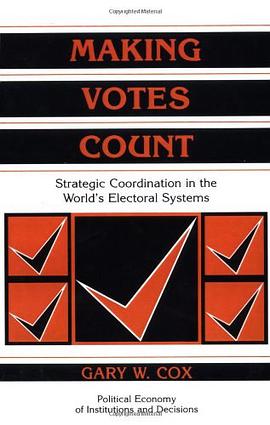Making Votes Count
豆瓣
Strategic Coordination in the World's Electoral Systems
Gary W. Cox
简介
Popular elections are at the heart of representative democracy. Thus, understanding the laws and practices that govern such elections is essential to understanding modern democracy. In this book, Cox views electoral laws as posing a variety of coordination problems that political forces must solve. Coordination problems - and with them the necessity of negotiating withdrawals, strategic voting, and other species of strategic coordination - arise in all electoral systems. This book employs a unified game-theoretic model to study strategic coordination worldwide and that relies primarily on constituency-level rather than national aggregate data in testing theoretical propositions about the effects of electoral laws. This book also considers not just what happens when political forces succeed in solving the coordination problems inherent in the electoral system they face but also what happens when they fail.
contents
List of tables and figures;
Series editor's preface;
Preface;
PART I. INTRODUCTION:
1. Introduction;
2. Duverger's propositions;
PART II. STRATEGIC VOTING:
3. On electoral systems;
4. Strategic voting in single-member single-ballot systems;
5. Strategic voting in multimember districts;
6. Strategic voting in single-member dual-ballot systems;
7. Some concluding comments on strategic voting, PART III. STRATEGIC ENTRY:
8. Strategic voting, party labels and entry;
9. Rational entry and the conservation of disproportionality: evidence from Japan;
PART IV. ELECTORAL COORDINATION AT THe SYSTEM LEVEL:
10. Putting the constituencies together;
11. Electoral institutions, cleavage structures and the number of parties;
PART V. COORDINATION FAILURES AND THE DEMOCRATIC PERFORMANCE:
12. Coordination failures and representation;
13. Coordination failures and dominant parties;
14. Coordination failures and realignments;
PART VI. CONCLUSION;
15. Conclusion;
Appendices;
References;
Subject index;
Author index.